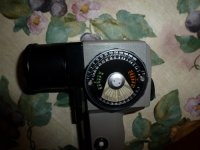johannielscom
Snorting silver salts
What the title says, calling out to all Zone System aficionados and other too.
Is mastering the Zone System doable at all without using a 1º spot meter?
I'm looking to improve my exposures and currently own a Gossen LunaSix-3 which offers reflective reading, incident reading and (with the addition of a dedicated accessory) also 15º and 7.5º spot metering. It's large but accurate and I like it.
Am I good to go or is a true 1º spot meter essential to get the best results?
Is mastering the Zone System doable at all without using a 1º spot meter?
I'm looking to improve my exposures and currently own a Gossen LunaSix-3 which offers reflective reading, incident reading and (with the addition of a dedicated accessory) also 15º and 7.5º spot metering. It's large but accurate and I like it.
Am I good to go or is a true 1º spot meter essential to get the best results?


